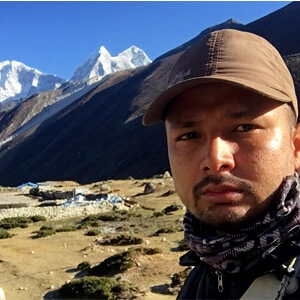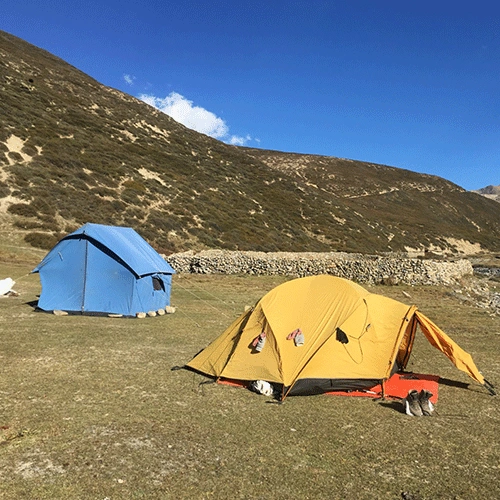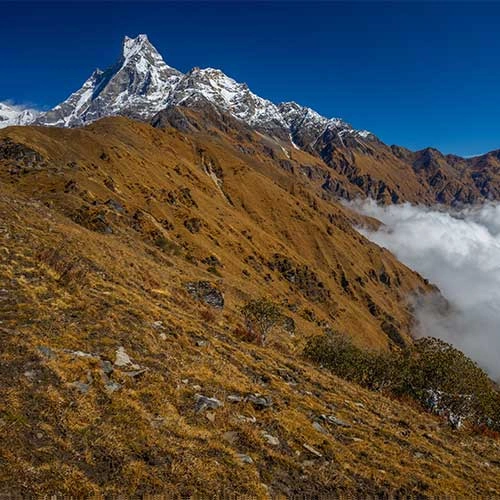Elevation of Popular Himalayan Base Camps in Nepal
If you are curious about Himalayan base camp altitudes, there are several popular base camps in the Himalayas that attract thousands of trekking tourists from all over the globe every year. These Himalayan base camps belong to the most popular pristine peaks in the Nepali Himalayas that have earned themselves names for the exhilarating adventures they offer.
Everest Base Camp
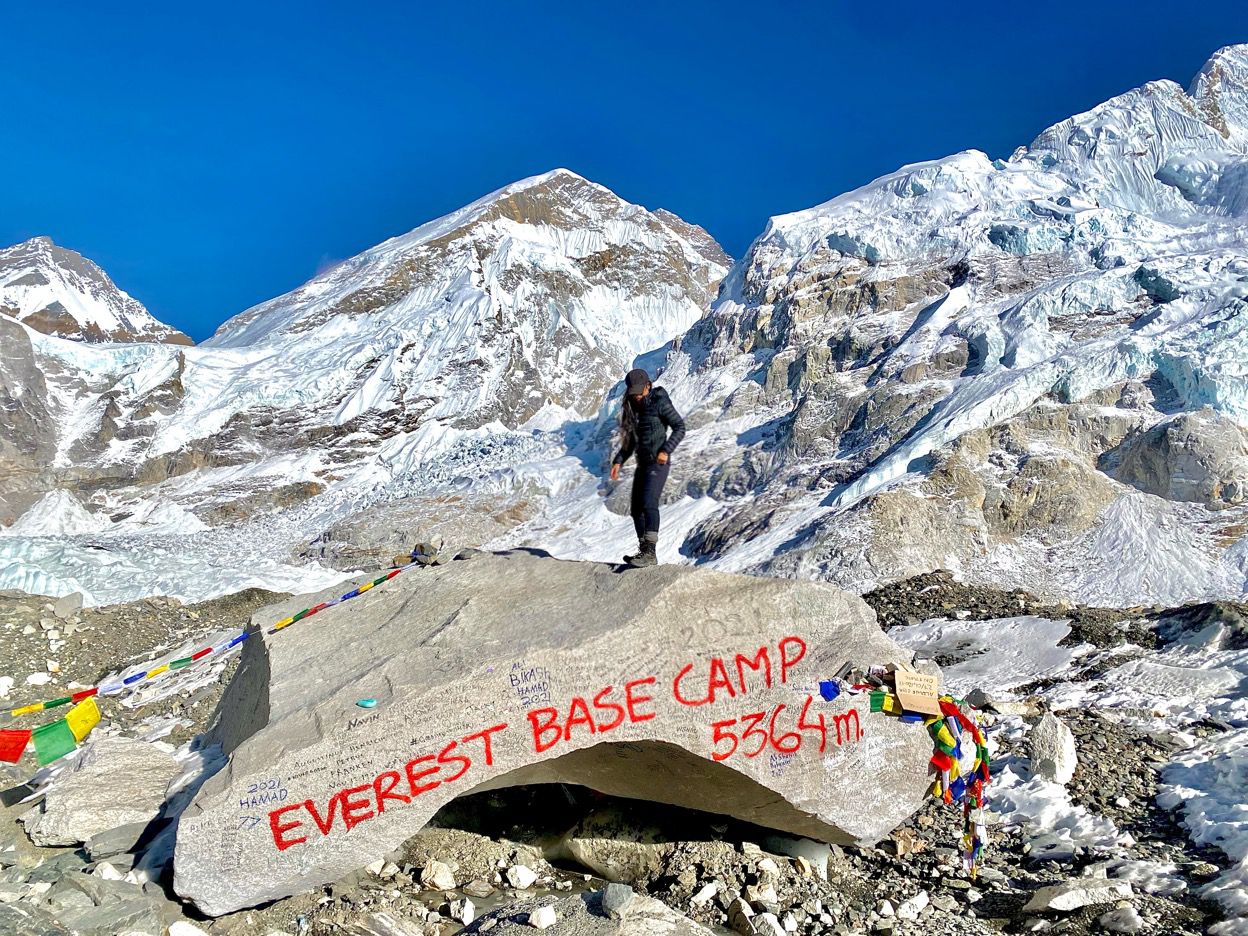
Everest Himalayan Base Camp Altitude: 5,364 meters/ 17,598 feet
Trek Duration: 12 to 14 days
Difficulty Level: Moderate
Everest Base Camp is the most popular Himalayan trekking adventure destination in Nepal. If you are curious about the Himalayan base camp altitude and the most exhilarating exploration experience of all, this base camp outranks every other exploration prospect in the country.
The foothills of the highest snow-clad peak on the planet, Mt. Everest (8,848 meters), is one of the most explored trekking regions in Nepal. The journey to Everest Base Camp takes you across the culturally enthralling Sherpa settlements, diverse landscape from sub-tropical forest to alpine moraines, and through the rich bio-diversity of Sagarmatha National Park.
This high Himalayan base camp in Nepal is the major highlight point of the northeastern prospects in the Himalayas and is known for the rewarding views of pristine peaks like Everest, Lhotse, Makalu, Cho Oyu, Ama Dablam and surrounding peaks.
Annapurna Base Camp
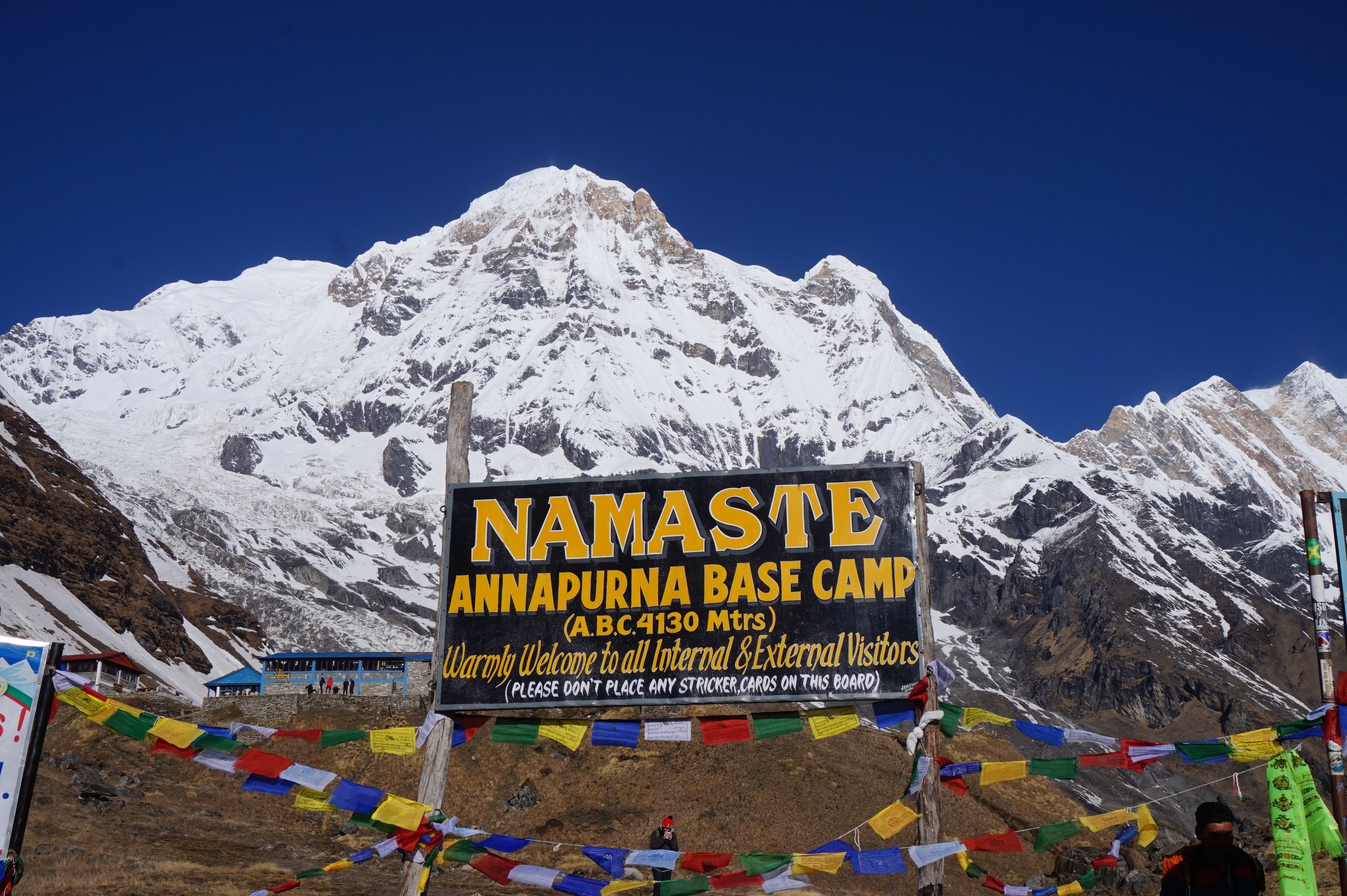
Annapurna Himalayan Base Camp Altitude: 4,130 meters/ 13,549 feet
Trek Duration: 11 to 14 days
Difficulty Level: Moderate
After Everest Base Camp, the second mainstream trekking region in the Himalayas in the Annapurna region. Annapurna Base Camp is one of the most beloved and iconic Himalayan trekking adventures in this second mainstream region. The trekking adventures in this classical route of the second most popular trekking region of the country take yous through the beautiful Gurung, Thakali, and Magar villages.
At the same time, this Himalayan base camp route also introduces you to incredible natural allurements of the fascinating diversity of the Annapurna Conservation Area. In comparison to other popular Himalayan base camp altitudes, the elevation of this base camp at the foothills of the tenth-highest peak in the world, Mt. Annapurna (8,091 meters), isn’t that significant and challenging.
Besides the easy-grade exploration of north central Himalayan prospects, what makes this Himalayan base camp trek more exhilarating than other base camp adventures in Nepal is that you will get the opportunity to explore two of the major base camps in the Annapurna region in a single itinerary plan: Annapurna Base Camp (4,130 meters) and Machhapuchhre Base Camp (3,700 meters).
Langtang Lirung Base Camp
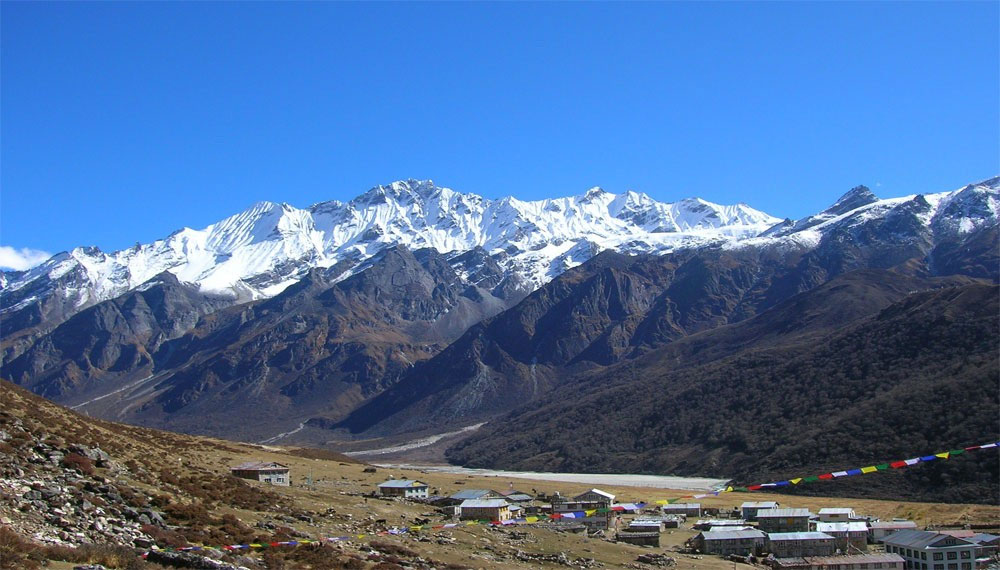
Langtang Lirung Himalayan Base Camp Altitude: 4,100 meters/13,451 feet
Trek Duration: 7 to 9 days
Difficulty Level: Moderate
When talking about the popular Himalayan base camp altitudes, we cannot simply miss out on one of the most prominent destinations in the Himalayas. Blessed with incredible natural beauty, diversity, and fascinating ancient settlements of the Tamang ethnic group, the Langtang region holds a firm position as the third-most-popular Himalayan trekking destination.
Thats why the Langtang Lirung Base Camp, a magnificent high-altitude Himalayan base camp in the northeastern Himalayas, receives thousands of trekking, nature, and cultural enthusiasts from all over the world. To sum it up, this Himalayan base camp journey is a gratifying experience that boasts its all.
From cultural immersive trails, enchanting beauty, and landscapes to spectacular mountain views and incredible bio-diversity of the first-ever Himalayan national park in Nepal, Langtang National Park (1976), there won’t be any single dull day in this Himalayan base camp journey. Each day’s journey will unfold the grandeur of nature and the mystery of ancient settlements thriving at the lap of the Himalayas.
Manaslu Base Camp
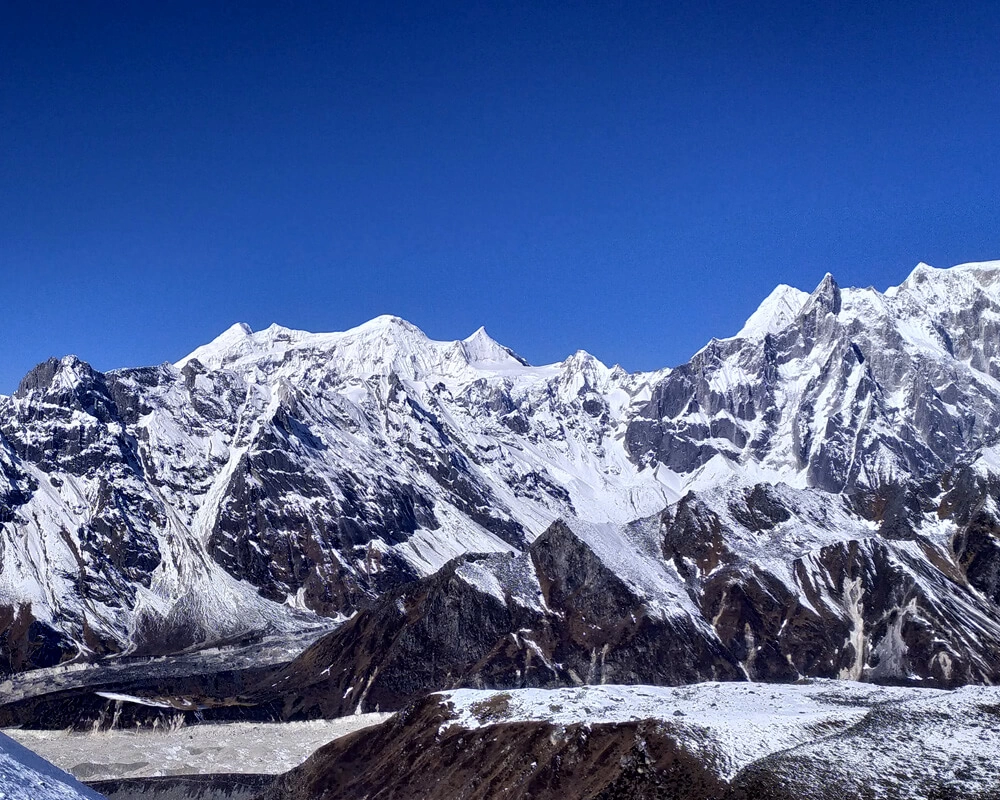
Manaslu Himalayan Base Camp Altitude: 4,800 meters/ 15,748 feet
Trek Duration: 12 to 15 days
Difficulty Level: Moderate
If you are looking for an exciting adventure distinctive from the mainstream route and not so much of an intimidating Himalayan base camp altitude, then the Manaslu Base Camp
is a perfect destination. Unlike other crowded mainstream trekking routes, this journey to experience the wilderness of the Himalayas in its raw stage is something that you will treasure forever.
This journey takes you on an exploration of the untamed sections of the west central Himalayas that are pretty close to the mainstream Annapurna region. You will have the opportunity to explore traditional settlements close to the Tibetan-Nepal borer and two of the major protected areas in the Himalayas: Manaslu Conservation Area and Annapurna Conservation Area.
As this off-beaten trail is pretty close to the mainstream Annapurna region, the breathtaking Himalayan vistas are also pretty extensive in this popular Himalayan base camp exploration. On a clear day, your route will reward you with the most incredible views of mountain ranges like Manaslu, Lamjung Himal, Annapurna II, Naike Peak, Himal Chuli, Peak 29, and other adjacent peaks.
Kanchenjunga Base Camp
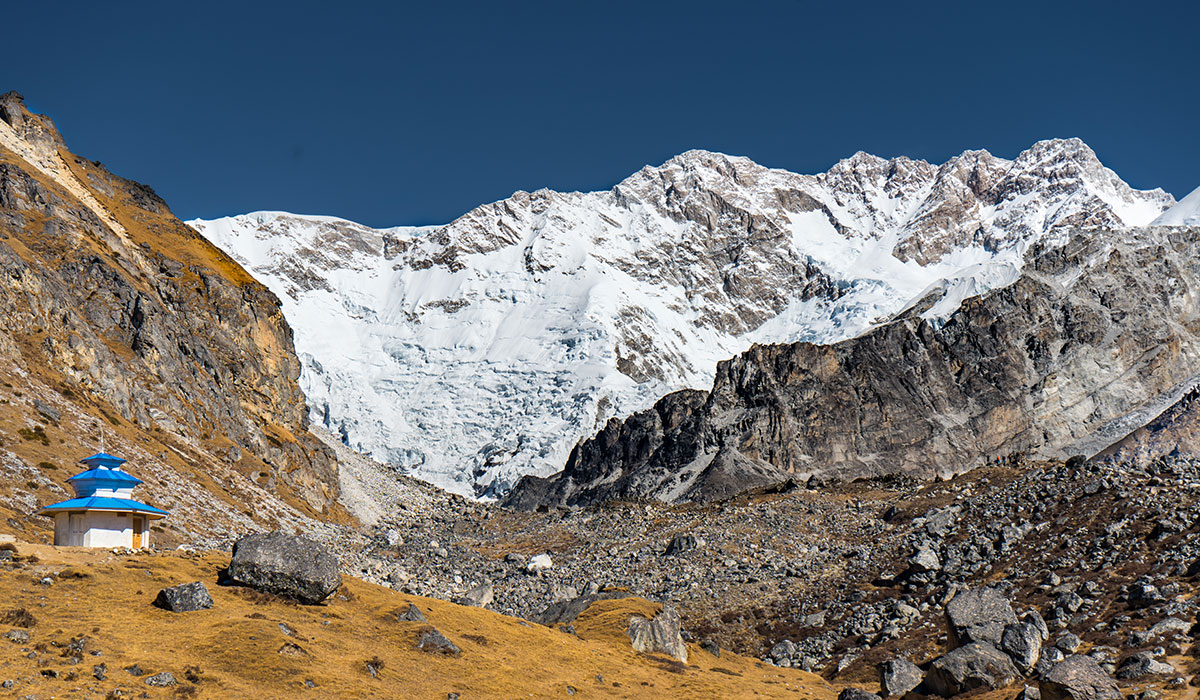
Kanchenjunga Himalayan Base Camp Altitude: 5,143 meters/16,873 feet (North), 4,740 meters/ 15,547 feet (South)
Trek Duration: 20 to 25 days
Difficulty Level: Moderate
Kanchenjunga Base Camp, after Everest Base Camp, is one of the most thrilling destinations with significant altitude. The Himalayan base camp altitude of this eastern Nepal trekking prospect is pretty high compared to other foot bases of the Himalayas. On top of that, this remote, off-beaten exploration of the Himalayas is one of the longest, which can even last upto a month.
You might not know this, but before Mt. Everest got official recognition as the tallest mountain peak standing on the planet in 1856, Kanchenjunga used to be the owner of that title. So, naturally, the Himalayan base camp altitude at its foothills is on par with the foot base of the present tallest peak in the world title holder.
The exploration of the Kanchenjunga Base Camp takes you across the remote wilderness of eastern Nepal, promising a journey filled with vibrant cultural experiences and iconic Himalayan vistas from a different perspective than the mainstream region.
Besides the stunning views of the massifs like Kanchenjunga, Makalu, Yalung Kang, Kabru, Jannu, and other nearby peaks, the glacier exploration aspect of this journey is pretty remarkable, too. During your excursion, you will be able to relish the magnificent absence of the Himalayan glaciers, like Kanchenjunga Glacier, Yamatari Glacier, Lhonak Glacier and Kumbhakarna Glacier.
Effects related to High Himalayan Adventure
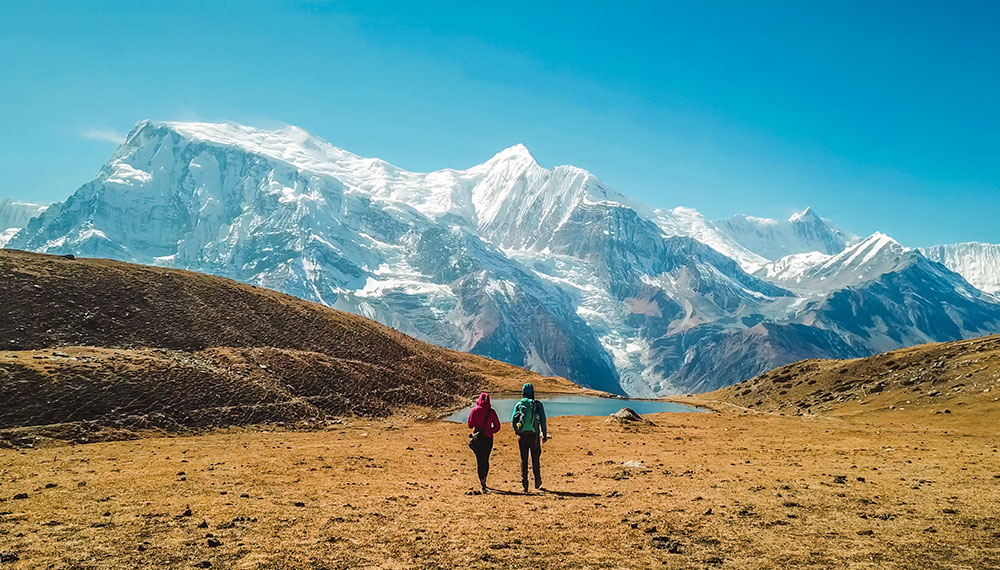
While doing high-altitude trekking adventures, there are several things that you have to consider. Altitude gain is one of the major hurdles of such elevation journeys as with significant altitude gain, the risk of altitude sickness also proportinalety increases.
The altitude sickness can be generally classified into three classes, and each of them represents different stages of severity.
- Acute Mountain Sickness (AMS)
- High Altitude Cerebral Edema (HACE)
- High Altitude Pulmonary Edema (HAPE)
Acute Mountain Sickness (AMS)
AMS is a milder form of altitude sickness that trekkers generally face after ascending over an altitude of 2,500 meters. The symptoms of AMS can be dizziness, fatigue, nausea, loss of appetite, insomnia, etc, and it can resolved withing 12 to 48 hours if the trekker doesn't ascend to further altitudes.
High Altitude Cerebral Edema (HACE)
HACE is a more severe form of altitude sickness and is the stage when the sickness affects your lungs. At this stage, the lungs are filled with fluid due to continuous exposure to alpine altitudes. Although it is not the most deadly form of altitude sickness, if proper precaution is not followed, it can cause death faster than any other conditions of altitude sickness.
High Altitude Pulmonary Edema (HAPE)
HAPE, on the other hand, is considered the final stage of AMS; it is the most severe form of altitude sickness that causes the brain to swell. So, if the patient doesn’t receive an immediate emergency response, the fatality rate is high in this life-threatening stage of altitude sickness.
You may also like:
Helpful Tips for Altitude Adaptation in the Himalayas
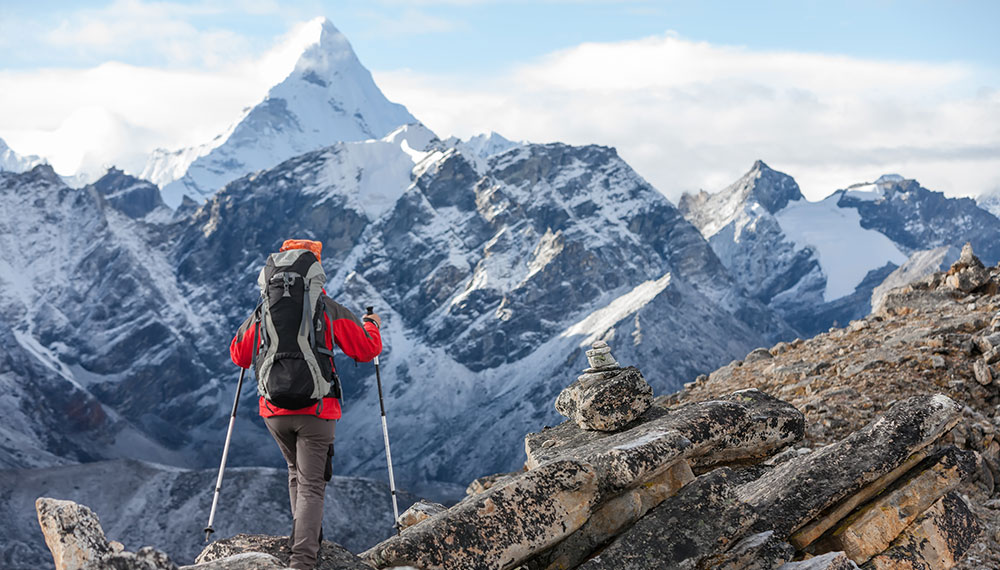
If you are planning an adventure to a high-altitude Himalayan base camp, there are several ways to mitigate the risks related to altitude sickness. You significantly reduce the chances of altitude sickness in your Himalayan journey if you follow the following tips.
Ascend Gradually
One of the most significant steps to reduce the probability of altitude sickness during your Himalayan excursion is to ascend slowly and gradually. Remember, you are exploring the mystical charms of the Himalayas and not participating in a marathon.
Most trekkers make the mistake of ascending too fast at higher altitudes and often struggle with the milder symptoms of AMS. If a similar pace is followed at alpine altitudes, then the risk of HACE and HAPE also potentially increases. So, take short breaks along the ascending route and give your body enough time to adapt to the altitudes before pushing further.
**Note: You are not recommended to ascend over an altitude of 500 meters in a single day in high-altitude adventures**
Acclimatize Properly
If you have ever participated in high-altitude adventures, then you understand how important the overall acclimatization process is. Acclimatizing, taking breaks at the strategic points of any high altitude journey is the most effective way to keep altitude sickness at bay.
Generally, it is recommended that you should take an acclimatizing day after ascending over an altitude of 1,000 meters. Taking a break along the high-altitude journey will give your body enough time to get used to a new altitude before pushing for further elevation points.
Stay Hydrated and Eat a Nutritious Diet
During the long hours of the journey, while doing Himalayan treks, your body will lose a significant amout of water level. Thus, it is important to keep your body water level at optimum to avoid any forms of altitude sickness. The minimum recommended hydration limit during each trek is 3 to 4 liters.
Similarly, without proper fuel, pulling off the physically demanding trek is not possible. If you do not eat a balanced diet, your body will weaken, putting you at risk of altitude sickness and other general illnesses.
**Note: Feeling loss of appetite while doing altitude trek is pretty common. You are recommended to eat the first few bites forcefully even if you have to, and your body will slowly start accepting the food**
Pay Attention to Your Body Language
You also need to pay proper heed to how your body is reacting to the new altitudes. Even if the symptoms are mild, don’t ignore them if they are related to altitude sickness. Don’t over-exert yourself during the trek, and take a short snack break to re-energize your body.
If the symptoms seem to be troublesome, consult your guide immediately and follow appropriate measures to deal with them. Descent down to lower altitudes if you have to rather than putting your body at risk of more severe forms of altitude sickness.
Avoid Alcohol and Cigarettes
This can be slightly tricky if you are habituated to consuming cigarettes and alcohol pretty much on a daily basis. Both alcohol and cigarettes are known to complicate the acclimatization process, making you more prone to symptoms related to altitude sickness.
Thus, it will be best if you avoid them completely during your high-altitude journey. Furthermore, navigating the steep sections of the high-altitude journey under the influence of alcohol can be a risky move and severely jeopardize your retirement plan.








